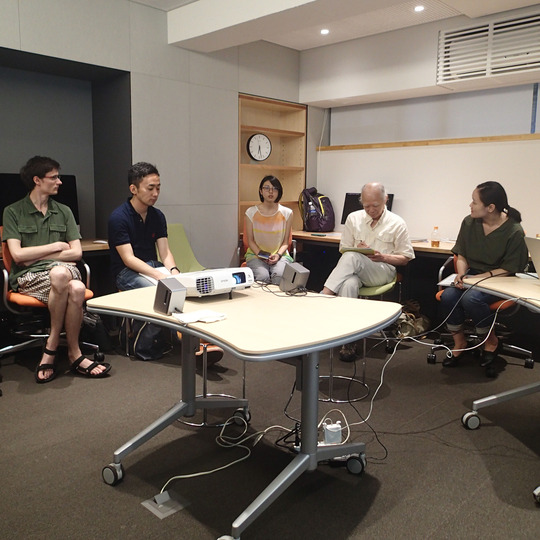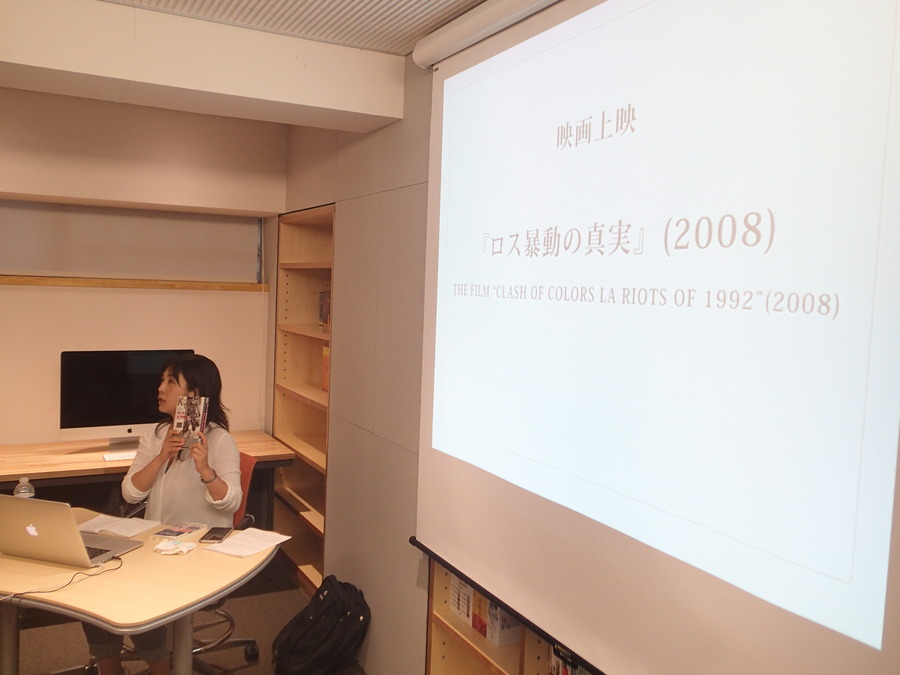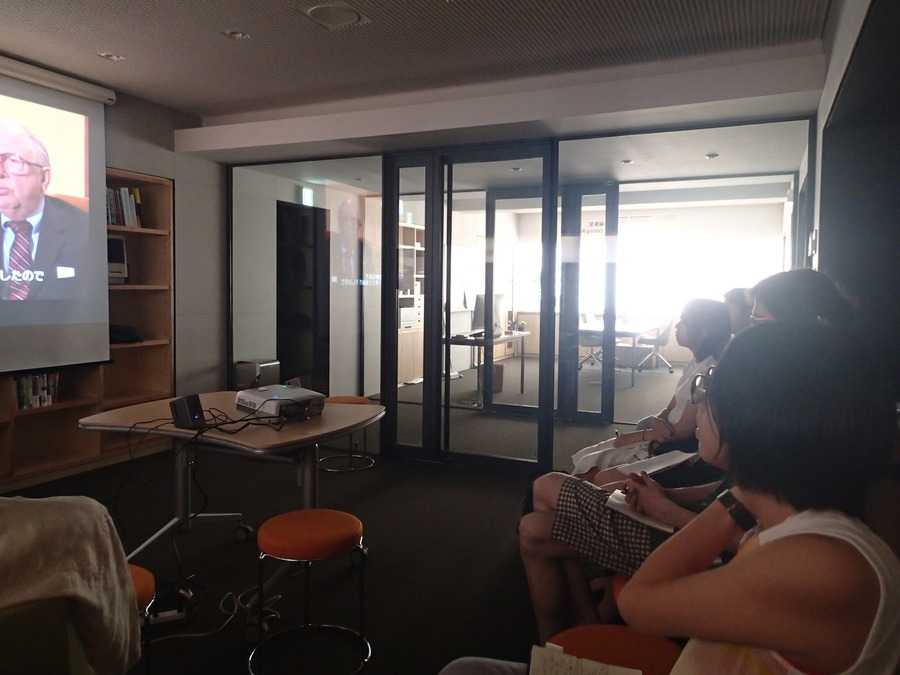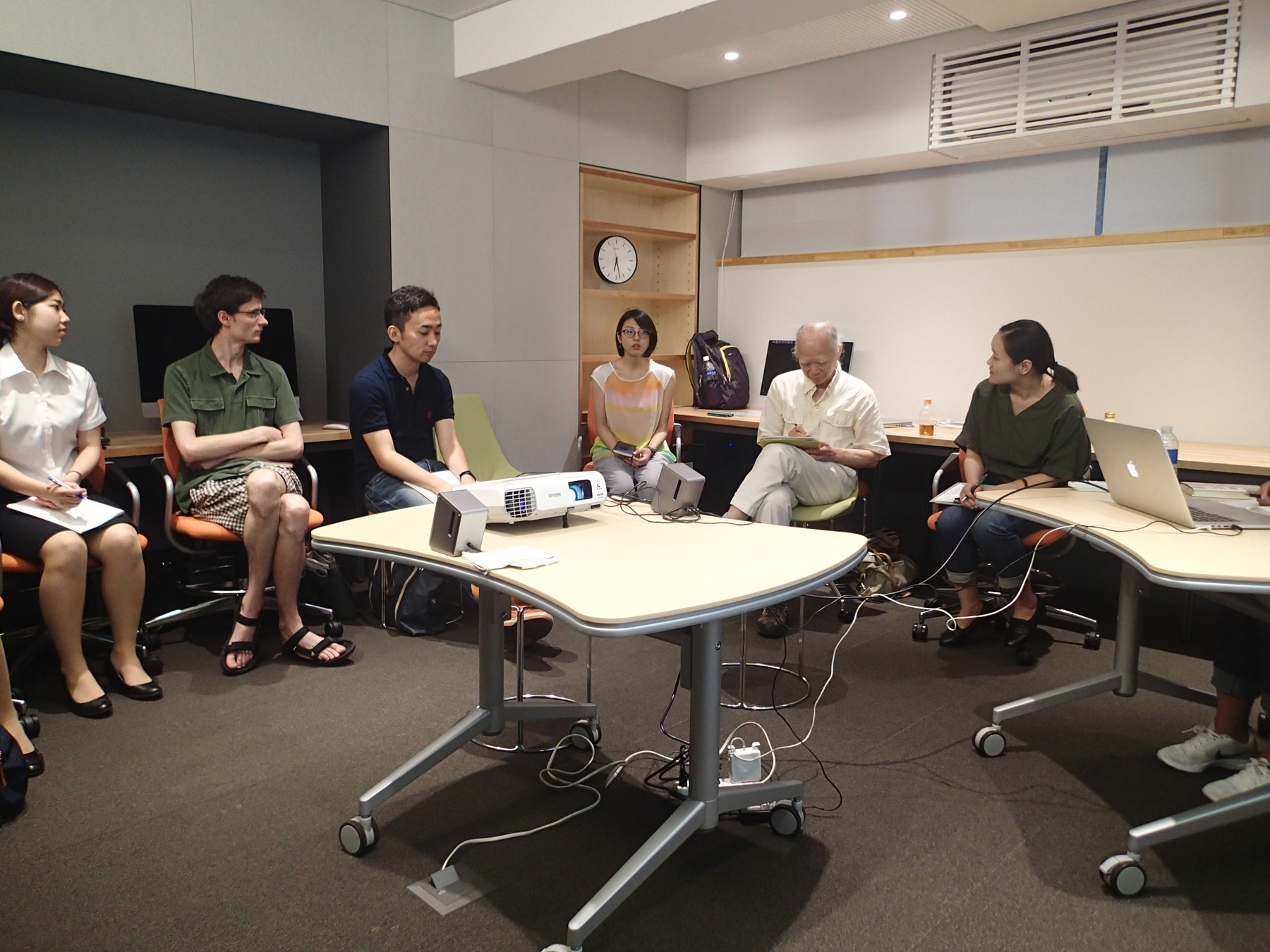
Report: On the Issue of Hate Speech and Cultural Diversity in Contemporary Japanese Society – Thinking from the Film Clash of Colors: LA Riots of 1992 (2008) Minakata Marcin
- Time and Date
- 16:30-19:30, July 21 (Wed.), 2016
- Location
- Media Studio iii UTokyo, III Main Building, Hongo Campus
- Organized by
- The Educational Project 4 "Producing Multicultural Communities," Integrated Human Sciences Program for Cultural Diversity, The University of Tokyo
It was my pleasure to take part in the film screening "Clash of Colors: LA Riots of 1992". As hate speech has become a popular keyword these days I believe it is important to understand it more deeply. What is more, it is certainly one of the biggest obstacles to build a multicultural society, which is one of the IHS Program's goals. Therefore rather than neglecting it, we should learn from the other countries' experience - what happened in Los Angeles in 1992 definitely ought not to occur again.
Before the screening, Jihye Chung, Research Assistant of the IHS Project 4, gave us very good introduction to the topic, as the early 90s was not that recent history as it sounds. Direct reasons causing social unrest in LA were the arrest and beating of Rodney King, the process of which was taped and showed on TV over and over again without the context of high-speed police chase. Another case is related to storekeeper Soon Ja Du, who killed a 15 years old black girl Latasha Harlins after a short fight. It provoked anger from Afro-Americans against Korean migrants. These incidents happened against the background of economic stagnation. Black people felt that their condition worsened much, and the well-educated, hardworking Korean minority, mainly owning small businesses, became the scapegoat for such situation. The riots were quite devastating, leaving over 50 people dead, 4000 injured, with huge property loss (some 750 million dollars) on the Korean side.


Discussions afterwards as well as the movie itself raised some interesting issues. Certainly the biggest problem was with the news coverage, which influenced the social unrest. Probably in order to increase ratings, mass media focused on the key scenes, leaving the broader context untouched and provoked people to make offensive responses. It proves that racism was (and still is) a well-selling thing. On the other hand, unable to control the situation and worrying that the riots may spread to the whole city, the police department chose to create lines of defense for places such as the white communities. What's more, Korean Americans weren't represented in the local government, creating an imbalance of power in favor of Afro-Americans.
What can be concluded then? After watching the whole movie I thought that similar things may happen today in USA or Europe and even Japan. People continue to be easily influenced and divided by media and politicians without fully understanding what they are so angry about. Rather than affirmative action, I would propose creation of a society without prejudice and bias against minorities. However how to achieve this goal will remain an open question.

report date : July 25, 2016
